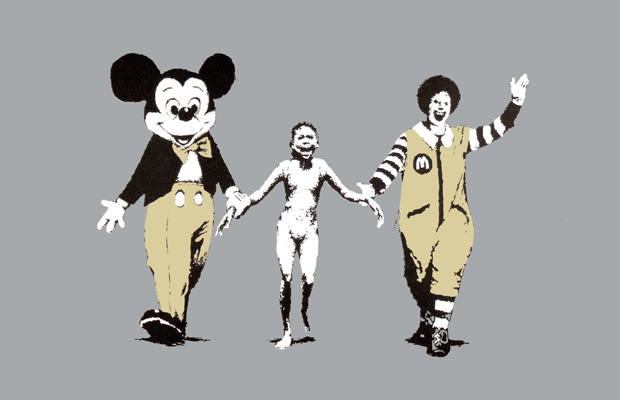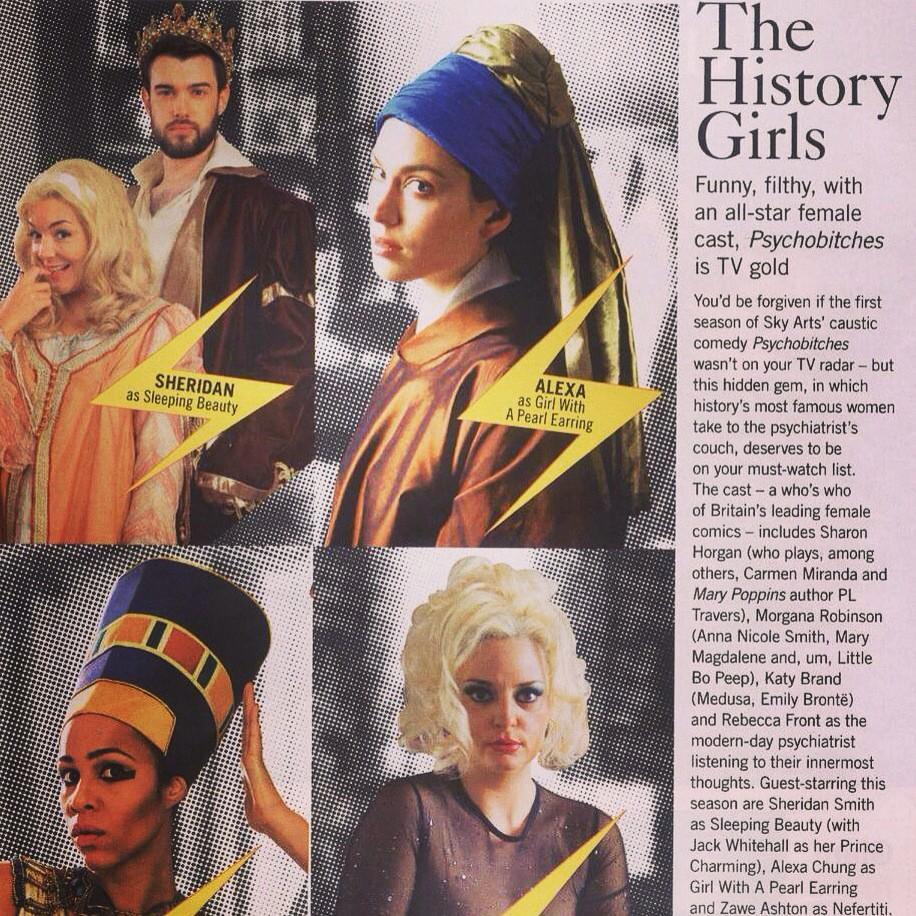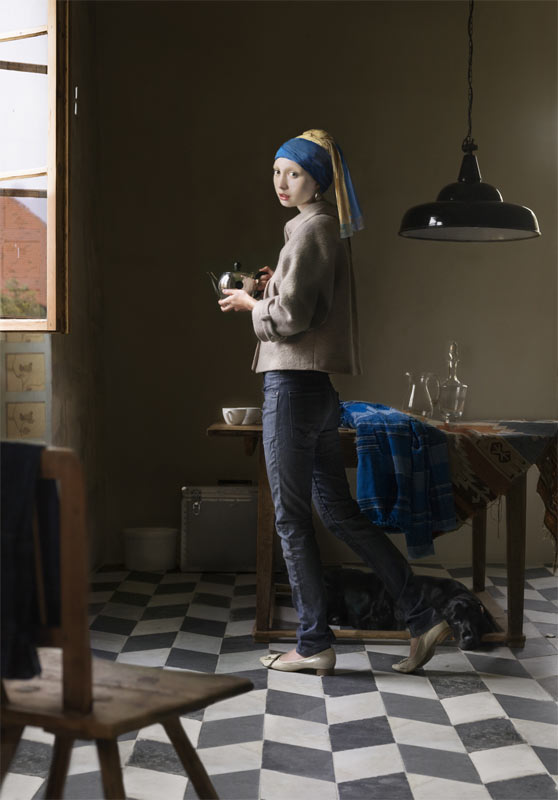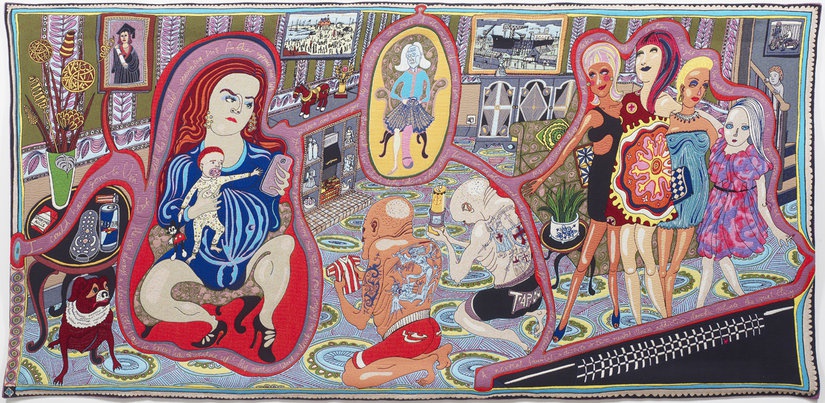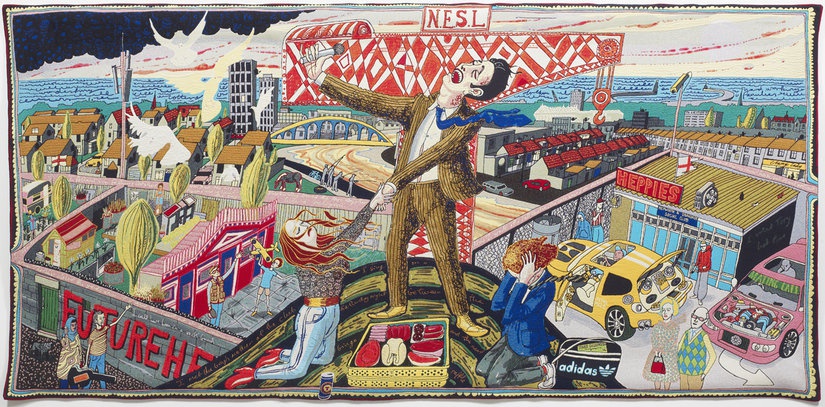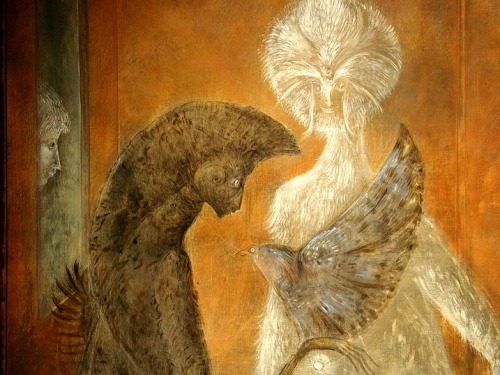Surrealism was developed from the
'Dada', a band of artists with a gloomy outlook on the effects of the first world war (believing it was the be all and end all of art and thus causing them to create 'pointless' art - birthing surrealism). The surrealist movement originated in Western Europe, particularly France and Germany, but the most important center of the movement was Paris as this is where the surrealist clique was formed. From the 1920's onwards the movement spread globally, effecting an array of things with it, such as the visual arts, film and even literature.
Leonora Carrington, a Mexican surrealist painter born in Britain, is a personal favourite of mine. She is known for being one of the final remaining surrealist artists from the movement (although now deceased as of 2011) and was introduced to the likes of Surrealism/Max Ernst after receiving a copy of 'S
urrealism' by
Herbert Read's (1936). With somewhat of a fiery attitude and plenty of eccentricities, I find Carrington to be a perfect fit within Surrealism and even more so of an inspiration.

This particular piece,
"The Giantess (the Guardian of the Egg)" (tempera on wood panel) displays an array of exotic colours over a rough texture which truly help bring forth the sweeping, giant figure - allowing it to take center stage amongst the landscape and unusual creatures which surround her. Some of my favourite details in this picturesque scene are that of which are mostly minute, such as the golden corn which surrounds the Giantess' head like a mane, or the figures detailed on her red garb, and even the far off mountains and islands which are scattered in the background - emphasising her enormity. Most of all, though, I really love the overall aura of the piece. I understand that it's Surrealism but I can't help but be reminded of the the illustrations we so often see grace the pages of children's fairytale books, which in turn are often very surreal themselves (this could also relate to the fact that Carrington was not only artistically involved in painting, but writing too.)
Another painting done by Carrington is
"El recital de los sueños" which depicts four different figures whom all appear to be in an uncomfortably small space with one another. With the three bizarre and rather ethereal creatures being the main focus of the piece, the fourth (and more 'human' in appearance) of the batch becomes quite an eerie presence as it's shown isolated from the rest - peering in from behind what appears to be a pane of glass. The presence of this outcast figure begins to become more fathomable, however, once the title of this piece has been translated into English
(The Recital of Dreams). Although still a rather spectral presence, it's understandable that this figure is depicted in this way as it appears to be one watching the dream unfold in front of them, thus reinforcing the title and meaning behind the piece. Much like the previous painting, I love both the use of colours and texture within this dream-like scene. The warm tones make the scene appear welcoming, however the strange creatures then create a contrast by creating a sense of unease as the viewer is forced to think "W
hat are they?" and I personally believe these mixed emotions are exactly what dreams are all about: confusion and uncertainty.
Dorothea Tanning, a self-taught artist who found herself undoubtedly impressed by the exhibition
'Fantastic Art, Dada, Surrealism' located at the Museum of Modern Art, later became a surrealist painter herself.

One particular painting of hers,
"Eine Kleine Nachtmusik" (oil on canvas) depicts a very surreal and unfathomable scene which is said to be inspired by childhood fantasies/nightmares. The painting shows a hallway/corridor inhabited by a tattered sunflower which is surrounded by two young girls in equally as tattered clothing. The young girl in red, although not immediately apparent, is in fact a doll figure, and her representation as a toy comes from both her hairline and the molded form of her torso. The state of the sunflower and the clothes of the figures suggests there has been a struggle of sorts, and this becomes more clear upon knowing the artist's intentions in making the painting about confrontation. This allows the piece to become more flexible to public interpretation, giving viewers their own opportunity to understand what the piece is about. For example, upon viewing the piece again after gaining insight about it, I've come to believe that the confrontation took place between the doll figure and the human girl - the tattered clothes and the sunflower representing the damage done by the drama they've caused. The open door at the end of the hallway appears to be illuminating the extent of the damage caused in the heat of the moment, and in highlighting this we become aware of how fragile the bonds between things can be.
 "A Mi-Voix"
"A Mi-Voix" is another oil on canvas painting done by Tanning and it differs vastly from the painting seen above. In comparison, this piece is less refined with detail and is clouded with a variety of monochrome shapes. Tanning herself said that:
"I just wanted to paint a white and grey picture that would still have colour in its veins as we have blood under our winter-white skin.", giving the piece a sense of meaning and overall enhancing its beauty despite the confusion behind it.
When I first viewed this piece of work it reminded me of an ink blot, the kind in which the viewer often sees an image built entirely of their own personal perspective, and this was something I really enjoyed about this painting/surrealism art in general. To me, the shapes and colours which help define some sense of highlighting/shadows created the illusion of three feminine figures situated around a circular table of some kind. Although I'm sure this wasn't the intentional portrayal of the painting, I thought it was interesting that this is the image I saw, whereas another viewer will more than likely view it in a completely different light.
As a whole Surrealism is definitely a fascinating art form. It allows the viewer to view a piece of work and have their own conclusion on what exactly the piece is trying to portray, whether it was the artists original intention or not. I feel that this notion broadens the horizons for artists as it allows more people to get involved in art, and the idea that an artist's work has the potential to evoke a series of different thoughts from a variety of different audiences is a truly amazing prospect.
Sources used:
 This still from the animation provides us with a visual example on the overall feel and style of the animation from the beginning of the Walt Disney timeline. It is clearly produced by hand and, looking back on it now, it has a vintage quality to it which helps provide that nostalgic feeling. However, times have progressed, and so has the ways of animation. Despite the hand drawn Disney being a well loved method - contemporary audiences don't have that nostalgic quality to hold onto and thus techniques must change in order for them to maintain their status and popularity. This is where the digital age comes into play.
This still from the animation provides us with a visual example on the overall feel and style of the animation from the beginning of the Walt Disney timeline. It is clearly produced by hand and, looking back on it now, it has a vintage quality to it which helps provide that nostalgic feeling. However, times have progressed, and so has the ways of animation. Despite the hand drawn Disney being a well loved method - contemporary audiences don't have that nostalgic quality to hold onto and thus techniques must change in order for them to maintain their status and popularity. This is where the digital age comes into play.











